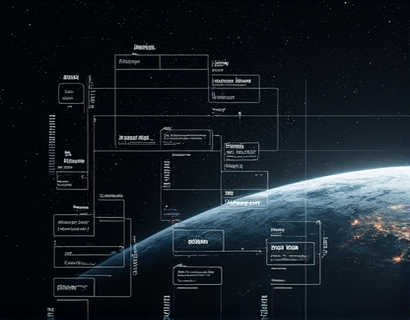Maximizing Leadership Efficiency: A Comprehensive Dashboard for Streamlined Team Management and Enhanced Productivity
In today's fast-paced business environment, effective leadership is crucial for driving success and maintaining a competitive edge. For business leaders and organizational managers, managing large and diverse teams can be a daunting task. The complexity of overseeing multiple departments, ensuring seamless communication, and making informed decisions can often lead to inefficiencies and bottlenecks. To address these challenges, a comprehensive dashboard has been developed, designed to streamline team management and enhance productivity across various industries. This advanced tool is not just a management solution but a strategic asset that empowers leaders to optimize their processes and achieve outstanding results.
Understanding the Need for a Comprehensive Dashboard
The traditional methods of team management, while effective to some extent, often fall short in handling the dynamic and multifaceted nature of modern organizations. Manual tracking, spreadsheets, and ad-hoc reporting can be time-consuming and prone to errors. A comprehensive dashboard addresses these issues by providing a centralized platform that integrates various aspects of team management. It offers real-time insights, automated reporting, and intuitive interfaces that simplify complex data into actionable information. This shift from manual to digital management not only saves time but also reduces the risk of human error, ensuring that leaders can focus on strategic initiatives rather than administrative tasks.
Key Features of the Dashboard
The dashboard is equipped with a suite of features tailored to meet the diverse needs of business leaders. One of the core functionalities is real-time monitoring. Leaders can track the progress of projects, monitor team performance, and identify potential issues before they escalate. This feature is particularly valuable in industries where timeliness is critical, such as manufacturing, healthcare, and finance. By having immediate access to up-to-date information, leaders can make informed decisions quickly, enhancing overall efficiency.
Another essential feature is enhanced communication. The dashboard includes integrated communication tools that facilitate seamless interaction among team members, regardless of their location. Features such as instant messaging, video conferencing, and collaborative document editing ensure that everyone is on the same page. This is especially beneficial for remote teams or organizations with a global presence, where face-to-face communication is not always possible. Effective communication is the backbone of any successful team, and this dashboard ensures that it remains robust and efficient.
Customizable dashboards are also a key component. Leaders can tailor the interface to display the metrics and KPIs that are most relevant to their specific needs. Whether it's sales performance, customer satisfaction scores, or project milestones, the dashboard allows for a personalized view that keeps leaders focused on what matters most. This customization ensures that the dashboard is not just a generic tool but a tailored solution that aligns with the unique goals and challenges of each organization.
Streamlining Operations
One of the most significant benefits of using a comprehensive dashboard is the streamlining of operations. By centralizing data and processes, leaders can eliminate the need for multiple disparate systems and tools. This consolidation reduces the complexity of managing different platforms and ensures that all team members are using the same information source. As a result, workflows become more efficient, and tasks are completed more quickly. For instance, in a manufacturing setting, the dashboard can integrate data from production lines, inventory levels, and quality control, providing a holistic view that helps in optimizing the production process.
Moreover, the dashboard supports automated workflows. Routine tasks such as task assignments, reminders, and status updates can be automated, freeing up time for leaders to focus on higher-value activities. This automation not only saves time but also ensures that critical tasks are not overlooked. In a healthcare organization, for example, the dashboard can automate patient appointment reminders, medication schedules, and staff shifts, ensuring that everything runs smoothly and efficiently.
Empowering Strategic Decision-Making
Data-driven decision-making is a cornerstone of modern leadership. The comprehensive dashboard provides leaders with the insights they need to make informed decisions. Advanced analytics and reporting tools allow leaders to analyze trends, identify patterns, and forecast future outcomes. For instance, in the retail industry, leaders can use the dashboard to analyze sales data, customer behavior, and market trends to make strategic decisions about inventory management, marketing campaigns, and store layouts. These insights enable leaders to respond proactively to market changes and capitalize on opportunities.
Additionally, the dashboard supports collaborative decision-making. Leaders can share insights and data with their teams, fostering a culture of transparency and collaboration. This approach not only enhances the quality of decisions but also increases buy-in and engagement from team members. In a financial services firm, for example, the dashboard can be used to present complex financial data in an accessible format, allowing the entire team to contribute to strategic planning sessions.
Enhancing Productivity Across Industries
The versatility of the comprehensive dashboard makes it an invaluable tool across various industries. In the technology sector, it can manage agile development projects, track bug reports, and monitor system performance. For IT teams, the dashboard provides a centralized view of infrastructure health, security alerts, and user activity, ensuring that potential issues are addressed promptly. In the service industry, the dashboard can optimize customer service operations by tracking service levels, employee performance, and customer feedback. This holistic view helps service managers to identify areas for improvement and implement targeted training programs.
In the construction industry, the dashboard can streamline project management by integrating data from site operations, supply chain logistics, and regulatory compliance. Project managers can monitor progress, manage resources, and ensure that projects stay on schedule and within budget. For educational institutions, the dashboard can help administrators manage enrollment, track student performance, and monitor resource allocation. This comprehensive oversight ensures that educational resources are used effectively, enhancing the overall learning experience.
User-Friendly Interface and Accessibility
The dashboard is designed with the user in mind, featuring an intuitive and user-friendly interface. Even leaders who are not tech-savvy can navigate the platform with ease. The dashboard's design prioritizes clarity and simplicity, with clear visualizations and straightforward navigation. This accessibility ensures that all team members, regardless of their technical background, can leverage the dashboard's capabilities to their full potential. Additionally, the platform is mobile-friendly, allowing leaders to access critical information on-the-go, whether they are in the office, at a client meeting, or traveling.
Security and Compliance
Security and compliance are paramount in today's digital landscape. The comprehensive dashboard adheres to the highest standards of data security, ensuring that sensitive information is protected. Features such as role-based access control, encryption, and regular security audits safeguard against unauthorized access and data breaches. This commitment to security is particularly important for industries that handle sensitive data, such as finance, healthcare, and government. Leaders can have confidence that their organization's data is secure, allowing them to focus on strategic initiatives without worrying about potential security threats.
Case Studies and Success Stories
Numerous organizations across different industries have already experienced the benefits of implementing a comprehensive dashboard. In the manufacturing sector, a leading automotive company reported a 30% reduction in production lead times after integrating the dashboard into their operations. The real-time monitoring and automated workflows enabled them to identify and resolve bottlenecks quickly, leading to increased efficiency and higher quality output.
In the healthcare industry, a major hospital system saw significant improvements in patient care and operational efficiency. The dashboard's integrated patient management tools allowed doctors and nurses to access critical patient information instantly, reducing wait times and improving treatment outcomes. The centralized platform also facilitated better coordination among different departments, enhancing the overall patient experience.
In the financial services sector, an investment firm utilized the dashboard to enhance their risk management processes. The advanced analytics and reporting features provided insights into market trends and client behavior, enabling the firm to make more informed investment decisions. This data-driven approach led to a 25% increase in portfolio performance over a year.
Conclusion
A comprehensive dashboard is more than just a tool; it is a strategic asset that transforms the way leaders manage their teams and drive productivity. By providing real-time insights, enhancing communication, and supporting data-driven decision-making, the dashboard empowers leaders to optimize their processes and achieve exceptional results. Whether in manufacturing, healthcare, finance, or any other industry, the benefits of a well-designed dashboard are clear. It is an essential investment for any organization looking to maximize leadership efficiency and stay ahead in a competitive market.










































